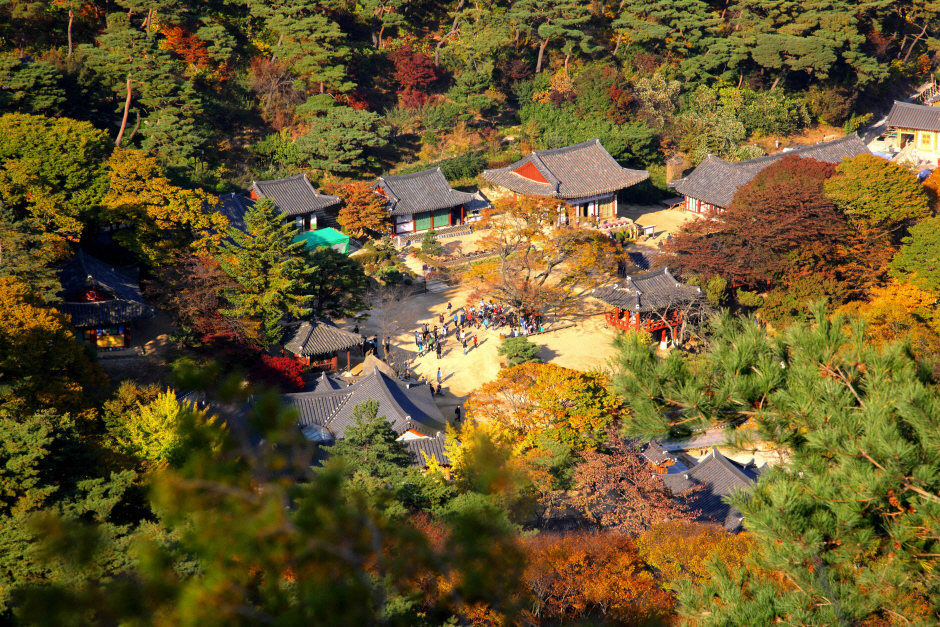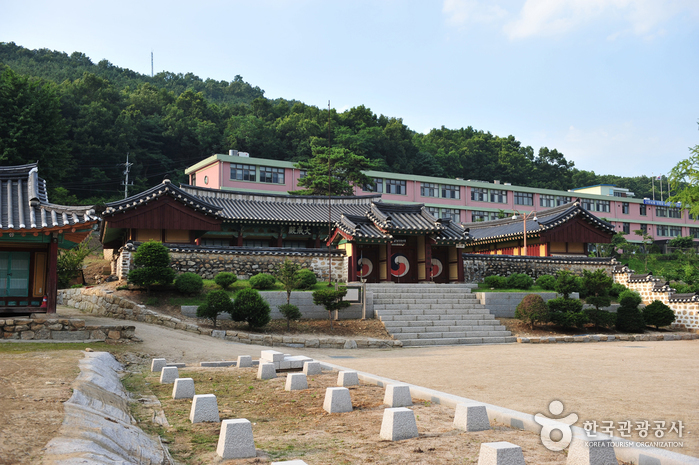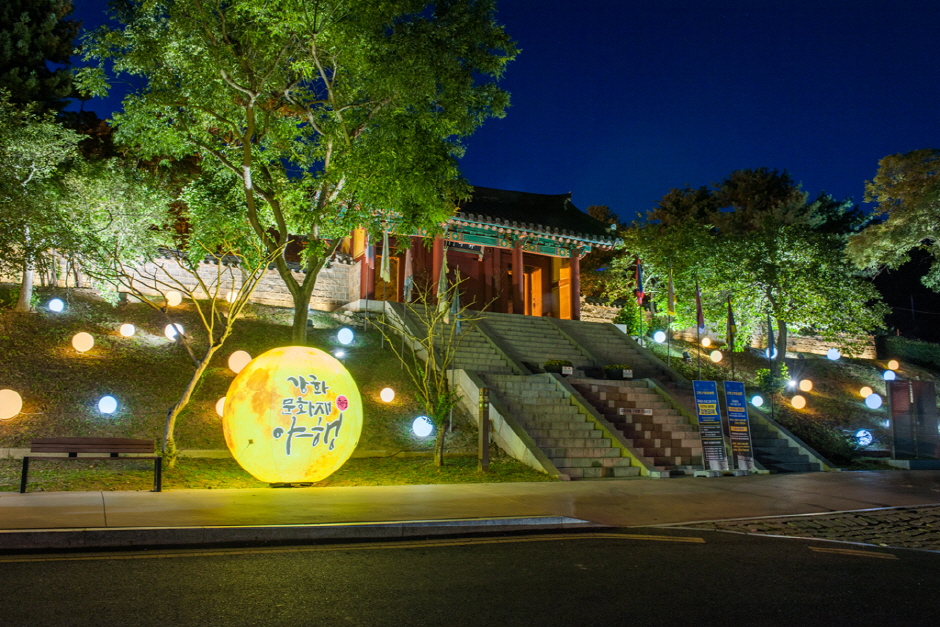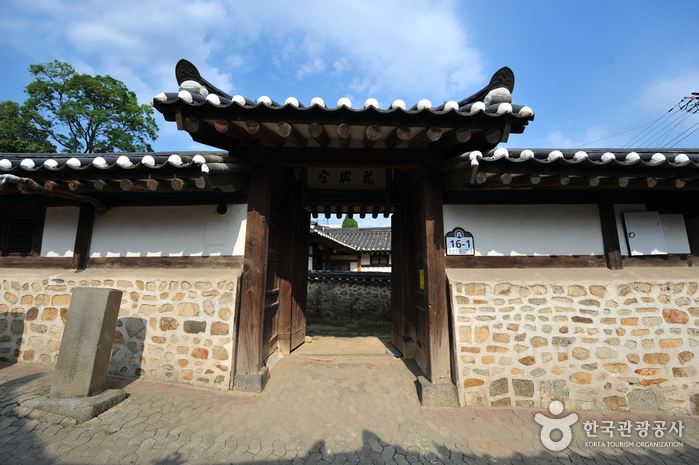[Ganghwa Nadeul-gil Course 4] Sunset Village Trail ([강화 나들길 제4코스] 해가 지는 마을 길)
15.7 Km 23150 2021-02-23
24, Cheonghadong-gil, Ganghwa-gun, Incheon
+82-32-934-1906
The Ganghwa Nadeul-gil Trails are a collection of walking paths along the coast of Ganghwa Island that connect the watchtowers and and walls of Ganghwasanseong Fortress, as well as royal tombs and other historically significant sites from the Goryeo dynasty that dot the island.
[Ganghwa Nadeul-gil Course 4] Sunset Village Trail
Course 4 stretches over an 11.5 kilometer area between Gareung Tomb and Mangyangdondae Fortification. This trail is especially popular among couples thanks to the romantic views of the sunset along the way. Other views include farming communities and fish markets.
[Ganghwa Nadeul-gil Course 3] Royal Tomb Trail ([강화 나들길 제3코스] 고려왕릉 가는 길)
15.7 Km 23110 2021-06-02
24, Cheonghadong-gil, Ganghwa-gun, Incheon
+82-32-934-1906
The Ganghwa Nadeul-gil Trails are a collection of walking paths along the coast of Ganghwa Island that connect the watchtowers and and walls of Ganghwasanseong Fortress, as well as royal tombs and other historically significant sites from the Goryeo dynasty that dot the island.
[Ganghwa Nadeul-gil Course 3] Royal Tomb Trail
Course 3 stretches over a 16.2 kilometer area between Onsu Parking Lot and Gareung Tomb. This trail showcases the royal tombs of the Goryeo dynasty. The trail passes through forested areas between tombs and temples.
[Ganghwa Nadeul-gil Course 1] Simdo History & Culture Trail ([강화 나들길 제1코스] 심도역사문화길)
15.7 Km 28800 2022-09-27
24, Cheonghadong-gil, Ganghwa-gun, Incheon
+82-32-934-1906
The Ganghwa Nadeul-gil Trails are a collection of walking paths along the coast of Ganghwa Island that connect the watchtowers and and walls of Ganghwasanseong Fortress, as well as royal tombs and other historically significant sites from the Goryeo dynasty that dot the island.
[Ganghwa Nadeul-gil Course 1] Simdo History & Culture Trail
Course 1 stretches over an 18-kilometer area between Ganghwa Bus Terminal and Gapgot Fortification. The trail includes sites such as Yongheunggung Palace, Ganghwahyanggyo Local Confucian School and an Anglican church. The course is an easy walk, with plenty of areas to stop and explore, as well as restaurants and convenience facilities for an enjoyable stroll.
Ganghwa Jeondeungsa Temple (강화 전등사)
15.7 Km 54050 2023-01-12
37-41, Jeondeungsa-ro, Ganghwa-gun, Incheon
+82-32-937-0125
Jeondeungsa Temple is located in Samnangseong Fortress, which is said to have been built by the three sons of Dangun, the founder of Korea. The temple was originally called Jinjongsa Temple during the early Goryeo dynasty; the name changed to the current Jeondeungsa Temple in 1282.
Jeondeungsa Temple contains significant architectural works, including the main building Daeungbojeon Hall (a Treasure), built in 1621. Decorated with delicate carvings, it is a superlative example of the architecture of the mid-Joseon dynasty. Visitors can see names of soldiers written on the walls and columns of Daeungbojeon Hall. These soldiers fought against the French Navy and wrote their names in Jeondeungsa to pray to Buddha for good luck in war.
There are ten other structures of historical significance at the temple including Yaksajeon Hall (a Treasure), Beomjong Bell (a Treasure), and Yangheonsu Victory Monument (a Tangible Cultural Treasure). The compound is also home to many ancient trees.
Ganghwahyanggyo Confucian School (강화향교)
15.8 Km 22552 2020-06-29
58, Hyanggyo-gil, Ganghwa-gun, Incheon
+82-32-930-4571
First established in Ganghwa-eup during the 5th year of King Injong in the Goryeo dynasty (1127), Ganghwahyanggyo Confucian School was moved to Ganghwa-gun and then restored at the foot of Buksan Mountain (formally Songaksan Mountain) in 1624 by Sim Yeol during the 2nd year of King Injo.
Ganghwahyanggyo Confucian School is regarded as an important cultural and historical site in Ganghwa-eup.
Daemyeongheon House [Korea Quality] / 남문한옥 대명헌 [한국관광 품질인증/Korea Quality]
15.9 Km 0 2021-03-25
7, Nammunan-gil, Ganghwa-gun, Incheon
Daemyeongheon House is a modern hanok building integrating elements of European architecture. Its interior features design that cannot be found in traditional hanok, such as English herringbone-style floorboards and stained glasses. The kitchen has a well-preserved domestic furnace and items in the style of 1930s, exemplifying the unique atmosphere of this modern hanok. Daemyeongheon is also famous for its connection to Kim Gu (pen-name: Baekbeom), a prominent independence activist: When Kim fled to Ganghwado Island about a hundred years ago, Daemyeongheon was the place he stayed for about three months, and also a place where he presided over a village school. Traces of Kim’s stay can still be found in the building.
Daemyeongheon House is made up of three buildings of the main building, a detached building, and an annex. The area that the guests stay in is the annex. The annex has three rooms, a central wooden-floored hall (daecheong), raised floor (numaru), balcony (jjongmaru), and kitchen. The restroom, which is also fitted with a shower booth, is located outside the building. Since reservations are offered to only one group per day, visitors have the house to themselves during their stay. Because of the building’s unique characteristics, guests are prohibited from cooking indoors; instead, guests are provided with a complimentary breakfast, such as bread, tea, coffee, and fruit.
Paid programs on site include tea ceremony, azalea craft on traditional Korean paper, retro-style clothing rental, and photography. Guided tours are offered twice per day at 14:00 and 16:00. The tour takes about 0.5–1 hr and requires a fee of KRW 10,000 (including tea). However, visitors should check the date before their visit, as the guided tour is not available when there are any guests staying in the house.
Shin Arirang (신아리랑)
16.0 Km 27051 2024-02-26
4-3 Ganghwa-daero 409beon-gil, Ganghwa-eup, Ganghwa-gun, Incheon
Shin Arirang is a restaurant specializing in jeotguk galbi (salted shrimp and galbi soup), a local food from Ganghwa-gun. Jeotguk galbi is made by boiling pork galbi, pork bones, and vegetables with salted shrimp, offering a savory and rich flavor. Conveniently located near Ganghwa-gun Office, it is easily accessible and popular among locals.
Dongmak Beach (강화 동막해변)
16.1 Km 127662 2023-01-12
1481, Haeannam-ro, Ganghwa-gun, Incheon
+82-32-937-4445
Dongmak Beach is a pristine attraction with white sands surrounded by a forest of pine trees. During high tide, visitors can enjoy sun bathing, while during low tide, a large mud flat opens up for visitors to observe various sea life such as clams, crabs and more. There are many attractions nearby to see and enjoy.
Night of Ganghwa & Heritage Story (강화 문화재 야행)
16.1 Km 368 2021-09-15
Gwancheong-ri. Ganghwa-gun, Incheon
• 1330 Travel Hotline: +82-2-1330 (Korean, English, Japanese, Chinese) • For more info: +82-32-930-3569
Night of Ganghwa & Heritage Story takes place in the city of Ganghwa. There will be a media facade on cultural heritage sites for online viewers as well as a guided tour on bikes for offline visitors.
Yongheunggung Palace (용흥궁)
16.1 Km 17823 2022-07-27
16-1, Dongmunan-gil 21beon-gil, Ganghwa-gun, Incheon
+82-32-930-3515
Yongheunggung Palace is where King Cheoljong (r. 1849-1863) used to live before his ascension to throne. The chief of Ganghwa County, Jeong Gi-se, enlarged the original residence and named it Yongheunggung (meaning palace of the rising dragon) in the 4th year of King Cheoljong’s reign. Its architectural features include a paljak (traditional Korean half-hipped roof) and supporting columns rendered in Jusimpo style, the column brackets placed only on top of the columns. The palace was built in the tradition of dwelling houses such as the Yeongyeongdang and Nakseonjae houses in Changdeokgung Palace, so the palace buildings give off a simple and plain atmosphere. Within the precincts of the palace are a memorial stone and a monument house indicating that the palace used to be the old home of King Cheoljong.
![[Ganghwa Nadeul-gil Course 4] Sunset Village Trail ([강화 나들길 제4코스] 해가 지는 마을 길)](http://tong.visitkorea.or.kr/cms/resource/16/1895216_image2_1.jpg)
![[Ganghwa Nadeul-gil Course 3] Royal Tomb Trail ([강화 나들길 제3코스] 고려왕릉 가는 길)](http://tong.visitkorea.or.kr/cms/resource/11/1895211_image2_1.jpg)
![[Ganghwa Nadeul-gil Course 1] Simdo History & Culture Trail ([강화 나들길 제1코스] 심도역사문화길)](http://tong.visitkorea.or.kr/cms/resource/97/1895197_image2_1.jpg)


![Daemyeongheon House [Korea Quality] / 남문한옥 대명헌 [한국관광 품질인증/Korea Quality]](http://tong.visitkorea.or.kr/cms/resource/12/2707012_image2_1.jpg)



 English
English
 한국어
한국어 日本語
日本語 中文(简体)
中文(简体) Deutsch
Deutsch Français
Français Español
Español Русский
Русский